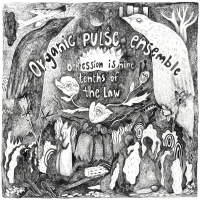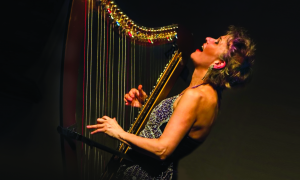Even if you own all 10 of the Freddie Hubbard albums covered on The Complete Freddie Hubbard Blue Note & Impulse '60s Studio Sessions, the newly released seven-CD set from Mosaic Records, this box is a must. The albums in the box were recorded between 1960 and 1967.
First, the box's sound is fantastic. It's much warmer and dimensional than previous issues, and the individual instruments are more vivid and distinct, with a broader and more colorful tonal impact. The music was mastered by Malcolm Addey at Malcolm Addey Studios from high-resolution files of the original analog masters using 24-bit technology throughout the process.
Second, after listening to the box multiple times, I found the set to be a fascinating trip that lets you size up the detailed mastery of Hubbard and his sidemen, and weigh him against Miles Davis. Hubbard (and Lee Morgan) were Davis's main artistic rivals throughout the decade, culminating in Davis's Bitches Brew and Hubbard's Red Clay, both groundbreaking fusion releases that were issued in the first half of 1970.
And third, the 22-page, large-format liner notes by Bob Blumenthal are deep and informative, and the accompanying glossy photos by Francis Wolff are engaging and bring lush visuals to the music.
While Miles Davis in the early 1960s was a modal artist who played in cool, taut lines that were delivered more like a singer's voice than traditional trumpeters, Freddie Hubbard blew hotter and rounder, and was firmly in the hard bop mode during this Blue Note/Impulse period. Each album is like a bouquet of flowers, with carefully chosen colors and textures to create a look. Best of all, each album had a different personality.
The albums are Open Sesame (1960), Going' Up (May 1961), Hub Cap (Oct. 1961), Ready for Freddie (April 1962), Artistry of Freddie Hubbard (March 1963), Here to Stay (recorded in December 1962 but not released until 1976), Hub-Tones (November 1963), The Body & Soul (July 1964), Breaking Point! (August 1964), Blue Spirits (February 1967) The two Impulse studio releases are The Artistry of Freddie Hubbard and The Body & The Soul.
Up until Hub-Tones, most of the songs on Hubbard's albums had been composed by other artists. From Hub-Tones on, however, we get to hear Hubbard's original writing, which was marvelous. The sidemen on the box's albums also are extraordinary. The list includes Tina Brooks, McCoy Tyner, Hank Mobley, Paul Chambers, Philly Joe Jones, Jimmy Heath, Julian Priester, Cedar Walton, Wayne Shorter, Elvin Jones, Curtis Fuller, John Gilmore, Tommy Flanagan, Louis Hayes, Herbie Hancock, James Spaulding, Eric Dolphy (on saxophone and flute), Ronnie Mathews, Joe Chambers and Joe Henderson.
I wish I could pluck out high points for you, but I can't. The truth is, every single track is as beautiful as can be. You could throw a dart at the track list and hit a gem. I listened to this box three times through as one long concept album, an evolution that took two days, though I did mange to hear them all in a single listen by starting early in the day. I was electrified at every turn. There were muscular hard bop pieces with Hubbard on fire, tender ballads with Hubbard more introspective, blues, and standards such as Dedicated to You, with Dolphy on flute and Hubbard's horn matching Dolphy's sensuality note for note. And Wayne Shorter's orchestral arrangements on The Body & the Soul are masterful and an eye-opener.
How does this material stack up next to Miles Davis over the same period? Impossible to compare. They're so different. I will say that Hubbard's work was more impressive on this box than I remember it from individual, isolated albums. I will say this: Miles's expression on the trumpet was more surgical and moody in these years while Hubbard's was thicker and operatic, in terms of power and drama. What I found most interesting is that this period for Hubbard in the 1960s was part of a progression that led to Red Clay. To complete the trail leading up to that masterpiece, I'll have to re-listen to the Atlantic recordings.
Freddie Hubbard died in 2008.
First, the box's sound is fantastic. It's much warmer and dimensional than previous issues, and the individual instruments are more vivid and distinct, with a broader and more colorful tonal impact. The music was mastered by Malcolm Addey at Malcolm Addey Studios from high-resolution files of the original analog masters using 24-bit technology throughout the process.
Second, after listening to the box multiple times, I found the set to be a fascinating trip that lets you size up the detailed mastery of Hubbard and his sidemen, and weigh him against Miles Davis. Hubbard (and Lee Morgan) were Davis's main artistic rivals throughout the decade, culminating in Davis's Bitches Brew and Hubbard's Red Clay, both groundbreaking fusion releases that were issued in the first half of 1970.
And third, the 22-page, large-format liner notes by Bob Blumenthal are deep and informative, and the accompanying glossy photos by Francis Wolff are engaging and bring lush visuals to the music.
While Miles Davis in the early 1960s was a modal artist who played in cool, taut lines that were delivered more like a singer's voice than traditional trumpeters, Freddie Hubbard blew hotter and rounder, and was firmly in the hard bop mode during this Blue Note/Impulse period. Each album is like a bouquet of flowers, with carefully chosen colors and textures to create a look. Best of all, each album had a different personality.
The albums are Open Sesame (1960), Going' Up (May 1961), Hub Cap (Oct. 1961), Ready for Freddie (April 1962), Artistry of Freddie Hubbard (March 1963), Here to Stay (recorded in December 1962 but not released until 1976), Hub-Tones (November 1963), The Body & Soul (July 1964), Breaking Point! (August 1964), Blue Spirits (February 1967) The two Impulse studio releases are The Artistry of Freddie Hubbard and The Body & The Soul.
Up until Hub-Tones, most of the songs on Hubbard's albums had been composed by other artists. From Hub-Tones on, however, we get to hear Hubbard's original writing, which was marvelous. The sidemen on the box's albums also are extraordinary. The list includes Tina Brooks, McCoy Tyner, Hank Mobley, Paul Chambers, Philly Joe Jones, Jimmy Heath, Julian Priester, Cedar Walton, Wayne Shorter, Elvin Jones, Curtis Fuller, John Gilmore, Tommy Flanagan, Louis Hayes, Herbie Hancock, James Spaulding, Eric Dolphy (on saxophone and flute), Ronnie Mathews, Joe Chambers and Joe Henderson.
I wish I could pluck out high points for you, but I can't. The truth is, every single track is as beautiful as can be. You could throw a dart at the track list and hit a gem. I listened to this box three times through as one long concept album, an evolution that took two days, though I did mange to hear them all in a single listen by starting early in the day. I was electrified at every turn. There were muscular hard bop pieces with Hubbard on fire, tender ballads with Hubbard more introspective, blues, and standards such as Dedicated to You, with Dolphy on flute and Hubbard's horn matching Dolphy's sensuality note for note. And Wayne Shorter's orchestral arrangements on The Body & the Soul are masterful and an eye-opener.
How does this material stack up next to Miles Davis over the same period? Impossible to compare. They're so different. I will say that Hubbard's work was more impressive on this box than I remember it from individual, isolated albums. I will say this: Miles's expression on the trumpet was more surgical and moody in these years while Hubbard's was thicker and operatic, in terms of power and drama. What I found most interesting is that this period for Hubbard in the 1960s was part of a progression that led to Red Clay. To complete the trail leading up to that masterpiece, I'll have to re-listen to the Atlantic recordings.
Freddie Hubbard died in 2008.
This story appears courtesy of JazzWax by Marc Myers.
Copyright © 2026. All rights reserved.
























